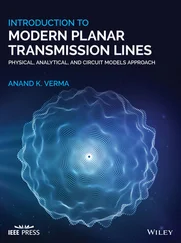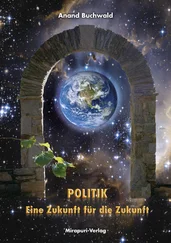SYMBOLISM OF DHARAMSALA: A CONTESTED TERRAIN
Conventionally, identity has been seen as primordial and natural, culture as organically rooted in a particular geographical space, and place as an inert space over which history is enacted. Place is held as providing "an inert, fixed, isotropic back-drop to the real stuff of politics and history" (Keith and Pile 1997, 4; see also Gupta and Ferguson 1997). On this view, Dharamsala is only a static stage for the theatrics of Tibetan diasporic culture and politics. However, this notion of fixity hides the fact that the geography of Dharamsala has had a changing symbolic role for the Tibetan diaspora. A transformation from a poor refugee settlement to one of the most popular tourist destinations in India, a change from a small, dilapidated village to a cosmopolitan small town-these are indicative as well as constitutive of changes within the Tibetan exile community. The questioning of the edifice of the conventional geographical imagination by a "cultural turn" within the field influenced by poststructuralism and postcolonialism makes it possible to study Dharamsala's symbolic geography. For place and space are now seen in social terms-not only do they shape social relations but, more important, they themselves are discursively constituted by social forces.
Spatialities, a term that recognizes the social construction of space and place, can be invoked to study how landscapes themselves are laden with multiple meanings. "Spatialities have always produced landscapes that are loaded with ethical, epistemological and aes-theticized meanings" (Keith and Pile 1993, 26). That Dharamsala has come to acquire multiple layers of not always harmonious meaning is therefore not surprising. While for some (the Tibetan refugees) it is a place of refuge from oppression, for others (the Chinese government) it is a center of seditious activities. For some (local Indians) it is a vital opportunity for material advancement; for others (many Western tourists) it is a spiritual refuge from the crass materialism of modern Western societies. For some (the Tibetans as well as non-Tibetan Buddhists) it is a center of pilgrimage; for others (many Indian tourists) it is merely a site of curiosity. All these ascribed meanings, some complementary and some contradictory, problema-tize any simplistic and holistic reading of the symbolic geography of Dharamsala. Rather than treating such tensions and contradictions as regrettable, we should rather see them as productive of the wider Tibetan diasporic identity-in-process.
Postcolonial criticality stresses the importance of recognizing the complexly intertwined and mutually constitutive relationship between imaginary and material geography. "Imaginary and material geographies are not incommensurate, nor is one simply the product, a disempowered surplus, of the other" (Jacobs 1996, 158). Instead of treating the symbolic in opposition to the material, a richer conceptualization recognizes that there is no "actual" that can be accessed independently of intersubjectivity, that there is no category of the "natural" that is not mediated through culture. This would facilitate an understanding of the spatialized politics of identity as well as the identity politics of space. The former might include a consideration of how particular imaginings of a unified homeland of Tibet shape the discourses of Tibetanness. A discussion of the identity politics of space might, on the other hand, consider how different groups, including the Tibetan government-in-exile, ordinary Tibetan refugees, Tibetans inside Tibet, the Chinese government, Western sympathizers, and the local Himachalis ascribe their own meanings to the place of Dharamsala.
Recognition that all geographies have acquired contested meanings through continuous processes of individual and collective imagination does not preclude a consideration of the physical and structural factors at work. For instance, though the residence of the Dalai Lama and the existence of a government-in-exile are among the more important factors, the physical location of Dharamsala in the hills of the Indian state of Himachal Pradesh has also facilitated its projection and promotion as a "Little Lhasa." Given the reputation of Lhasa as lying on the "roof of the world," it is difficult to imagine a place in the plains (rather than the hills) of India being promoted in the same way. Travel writings that emphasize the relative inaccessibility of Dharamsala are quite common. [77]This resonates with the reputation of Lhasa as the "Forbidden City" at the "roof of the world." In a certain sense, Dharamsala acts as an accessible substitute for those travelers (often white and Western) [78] whose imaginations have been influenced by the earlier writing of imperialist adventurers, "the trespassers on the roof of the world" (to evoke the title of Hopkirk's 1983 book). Thus, the mountainous terrain of McLeod Gunj and its distance from any big city contribute to the symbolic geography of Dharamsala.
The most important structural factor shaping the symbolic geography of Dharamsala is the imperative of refugee status. The locations of Tibetan settlements have been decided entirely by Indian central and state governments. For instance, the Dalai Lama shifted from Mussorie to Dharamsala on Indian Prime Minister Jawaharlal Nehru's advice in i960. An abandoned British hill station, McLeod Gunj was offered as a suitable quiet place for the Dalai Lama. [79]The transfer of the Central Tibetan Administration (the government-in-exile) followed soon after. Unlike in Lhasa, where the three big monasteries of the Gelugpa order were close to the Dalai Lama's seat, in India these monasteries have been reestablished in far-off places, due to the limitations of land available for settlement. The refugee status of Tibetans in South Asia prohibits them from owning immovable property unless offered by the host government. So any consideration of the symbolic geography of Dharamsala needs to keep these physical and structural factors in mind.
Before dwelling more on Dharamsala and the politics of identity, it should be pointed out that the place commonly designated as the Little Lhasa is actually McLeod Gunj (Upper Dharamsala). As the Himachal Pradesh Tourism Department board reads: "Welcome to Mcleodganj, the little Lhasa in India." The multilayered meanings in this name (McLeod Gunj) may be explored further (something not feasible within the space of this chapter)-British imperialism, the development of hill stations as places of refuge for the imperial class, the indigenization of names, and so on. [80]It can be read as indicating the important role played by British imperial practices in framing the various aspects of the Tibetan question. The distinction between Lower and Upper Dharamsala also reflects a gap between the local population and the refugees. While Tibetans here have generally managed to create their own niche in the wider society, the assertion of difference also leaves the potential open for conflict if the locals perceive the refugees to be a source of problems. [81]The government-in-exile promotes the name Dharamsala, and not McLeod Gunj, as the "Little Lhasa." This may be because Tibetan institutions and establishments are spread throughout the vicinity of Dharamsala. But how far the name "Dharamsala" itself may have inspired it is an open question, for the literal meaning of dharmashala-"the house of god/religion/dharma"-resonates well with the location of the Dalai Lama's residence and several religious institutions. Indirectly, the choice of name, with its association with spiritualism and faith, makes it more appealing to Western tourists too.
DHARAMSALA AS A TEMPORARY HOME: THE DOMINANT STORY
What are the specific ways in which the politics of place as embodied in Dharamsala inform the discourses of Tibetan identity? By drawing upon the usage of the words dharmashala/dharamshala, we can theorize Tibetan identity discourse in two broad ways-one offering the dominant story and the other allowing an alternative reading. Dharamshala in popular Hindi usage refers to a "temporary home," a "guesthouse." The dominant theorization, which has a wide currency among the Tibetan government-in-exile and nationalists as well as non-Tibetan supporters of the Tibetan cause, interprets the experience of diaspora as a temporary and regrettable phenomenon. And indeed, the place Dharamsala is seen as a temporary home with the final destination being the original homeland of Tibet. The exile is seen as a break in the evolution of an ancient civilization in Tibet, a time when it is vital to preserve a pure form of this civilization since it is under erasure in the original home. As my discussion of Exotica Tibet has shown, in journalistic and travel writings one often comes across eulogies to a lost Shangri-la in Tibet (particularly Lhasa) and observations on how the forces of modernization infused under the Chinese rule have spelled doom for the Tibetan culture. Such observations stand in contrast to those about the Tibetan communities living in South Asia, particularly in the area surrounding Dharamsala. In this case, though the cosmopolitan and eclectic cultural scene of McLeod Gunj is recognized, often the emphasis is on the success story of Tibetans in preserving their culture. "Working hard to rebuild their lives and preserve their distinctive and timeless culture and lifestyle, these people… have become arguably the most successful refugee community in the world whilst continuing the non violent struggle for Tibet's freedom in exile" (Barker 1999). The maintenance of Tibetan identity is seen as a functional expression of this culture.
Читать дальше












